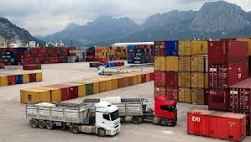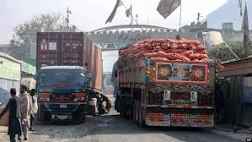Afghanistan’s exports have decreased and its imports have increased

A decrease in exports and an increase in imports can cause serious problems for the Afghan economy. These issues can lead to trade imbalance, decrease in foreign exchange reserves and increase in foreign debts. Here we examine some reasons and possible consequences of this situation and solutions to improve the situation:
Reasons for decreasing exports and increasing imports
-
Insecurity and political instability: Insecurity and instability can have a negative effect on production and export. Companies and farmers may not be able to operate properly due to security risks.
-
Lack of infrastructure: Lack of suitable infrastructure for production, transportation and storage can limit the export capacity.
-
Lack of access to international markets: Sanctions, trade restrictions and lack of trade agreements with other countries can reduce Afghanistan’s ability to export.
-
Import dependence: The increase in imports may be due to the need for consumer goods, raw materials and machinery that are not produced domestically.
consequences
-
Trade imbalance: A decrease in exports and an increase in imports can lead to a trade deficit, which in the long run causes a decrease in foreign exchange reserves and an increase in foreign debts.
-
Decreasing the value of the national currency: With the increase in imports and decrease in foreign exchange reserves, the value of the national currency may decrease, which can lead to inflation and increase in prices.
-
Decreasing economic growth: A decrease in exports can lead to a decrease in national incomes and a decrease in economic growth.
Improvement solutions
-
Improving security and political stability: Creating security and stability can provide better conditions for production and export.
-
Investment in infrastructure: Improving transportation, storage and production infrastructure can increase the country’s export capacity.
-
Development of agriculture and industries sector: Considering that Afghanistan has rich natural and agricultural resources, the development of these sectors can help increase exports.
-
Development of trade agreements: Efforts to sign trade agreements with other countries can increase access to international markets.
-
Strengthening domestic production: Policies to support domestic production and reduce dependence on imports can improve the trade balance.

Conclusion
Decrease in export and increase in import creates serious challenges for Afghanistan’s economy. By adopting appropriate policies and strategies, these problems can be managed and sustainable economic growth can be continued.
Reasons for increasing imports and decreasing exports
An increase in imports and a decrease in exports in Afghanistan can occur for several reasons. Here we examine some of the most important factors affecting this situation:
Reasons for the increase in imports
-
Lack of domestic production: If domestic production cannot meet the consumption needs of the society, the country is forced to import consumer goods, raw materials and machinery.
-
Low quality of domestic products: Domestic products may not be of sufficient quality to compete with imported products, so consumers prefer to buy foreign products.
-
Sanctions and trade restrictions: Sanctions or trade restrictions can reduce a country’s ability to produce certain goods and make their import necessary.
-
High demand for luxury and consumer goods: Increasing incomes and changes in lifestyle can increase the demand for imported luxury and consumer goods.
-
Trade policies: Inappropriate trade policies such as low import tariffs can increase imports and harm domestic industries.

Reasons for decreasing exports
-
Insecurity and political instability: Insecurity and instability can negatively affect production and exports. Producers may not be able to function properly due to security risks.
-
Lack of infrastructure: Lack of suitable infrastructure for production, transportation and storage can limit the export capacity.
-
Low quality products: Exported products may not be able to compete in foreign markets due to low quality or non-compliance with international standards.
-
Problems in accessing international markets: Sanctions, tariffs and non-tariff barriers can limit access to foreign markets.
-
Changes in global demand: Fluctuations in global demand for Afghanistan’s export products can affect the volume of exports.
-
Financial and credit problems: Financial problems and lack of access to appropriate financial facilities can make it difficult for producers to finance production and export.
Suggested solutions to improve the situation
-
Increasing domestic production: Investing in various industries and supporting domestic producers can reduce the need for imports.
-
Improving the quality of products: Improving the quality of domestic products and complying with international standards can help increase exports.
-
Development of infrastructure: Improvement of transportation, storage and production infrastructure can increase export capacity.
-
Signing trade agreements: Trying to sign trade agreements with other countries can increase access to international markets.
-
Supportive policies: Adopt appropriate trade policies such as protective tariffs to support domestic industries and create incentives for exports.
-
Creating political stability: Creating security and political stability can provide better conditions for production and export.
If you have other questions or are more interested in a particular topic, please let me know.